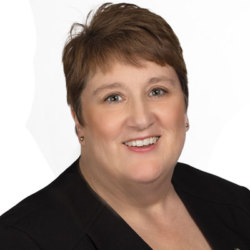Barriers especially harmful to women
The Platte Institute has focused significantly on workforce licensing reform for the last seven years. From making it easier for natural hair braiders to practice their craft to requiring reviews of every license required by the state to work on a five-year cycle, we’ve seen some successes in our efforts to make it easier for Nebraskans to work.
We have continued to work toward licensing reform that recognizes the experience of workers coming from out of state and provides second chances for those who have completed all state-imposed sentences for past criminal activity and want to enter occupations requiring licensure. We hope that Bill LB16 (which was advanced from the Government Committee to General File this year) will be taken up as a priority and passed in 2024.
With that background, a recent policy brief from the Knee Center for the Study of Occupational Regulation (CSOR) caught our attention a few days ago.
The brief, written by Dr. Darwyyn Deyo, an economics professor at San Jose State University, based on her research, suggests that state licensing of occupations tends to negatively impact women disproportionately to men, both directly and indirectly.
The direct impact comes in the form of the occupations that are licensed. Dr. Deyo used various data points to identify licensed occupations “predominantly female” (meaning that most licensees were women). Those occupations include midwifery, assorted nursing-related occupations (including advanced practice), daycare providers, teachers, and beauty care occupations like cosmetology-related jobs. As Dr. Deyo notes:
“Licensing barriers may also present a higher relative cost for women in the trade-off of the hours to complete years-long education requirements. They may face higher opportunity costs in giving up full-time work or paying for child care while they complete the educational requirements. These barriers may prevent their entry into licensed occupations altogether.”
Deyo also notes that research has shown that workforce licensing (in general) raises costs for consumers, and the indirect cost to women comes in that form. Since the primary users of many personal care services are women, the consumers of those female-dominated occupations also pay a premium for licensure. As she suggests:
“Overall, licensing raises costs for women as workers in licensed occupations and raises prices for women as regular consumers of licensed services.”
Deyo goes on to note that:
“States should review the extent to which their licensing burdens are disproportionately imposed on women, in addition to whether occupational licensing is necessary or could be replaced with a less burdensome alternative.”
The numbers in the study suggest that 61.8% of the licensed occupations in Nebraska are predominantly female.
Regardless of the gender differences in licensing, though, this is one more piece of research that suggests that state policymakers should be taking a comprehensive look at Nebraska’s licensing regime. Universal recognition makes sense for making it easier for trailing spouses and other needed workers to come to Nebraska.
Second-chance legislation provides dignity in work and a fresh start for those who have reformed their ways.
Finally, lawmakers should be taking a more rigorous look at the licensing that already exists. Does the licensing truly protect the public, or does it create barriers to entry into the occupation while increasing the prices consumers must pay for services and products? Perhaps, rather than adding more licenses, we should think about rolling back licensing.
